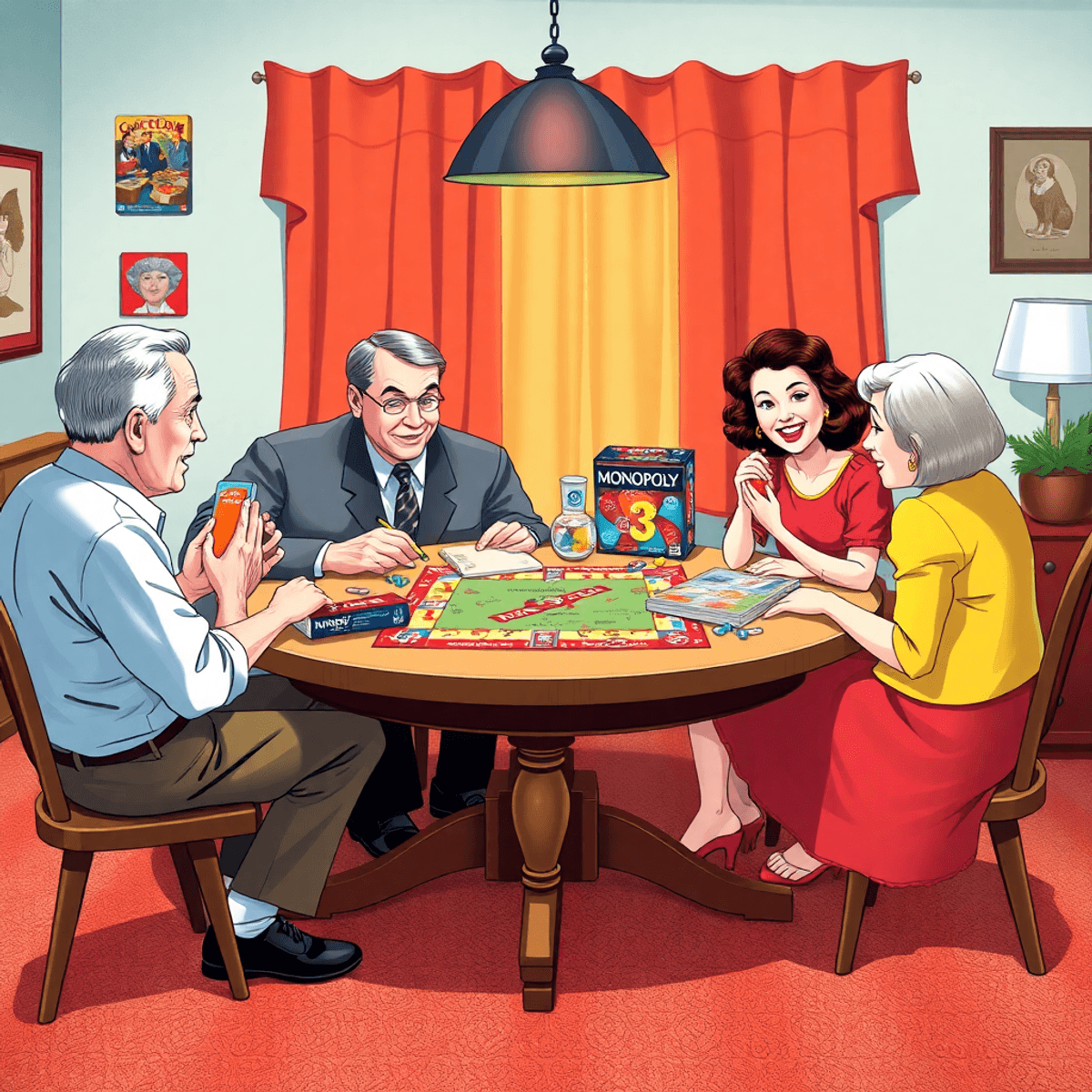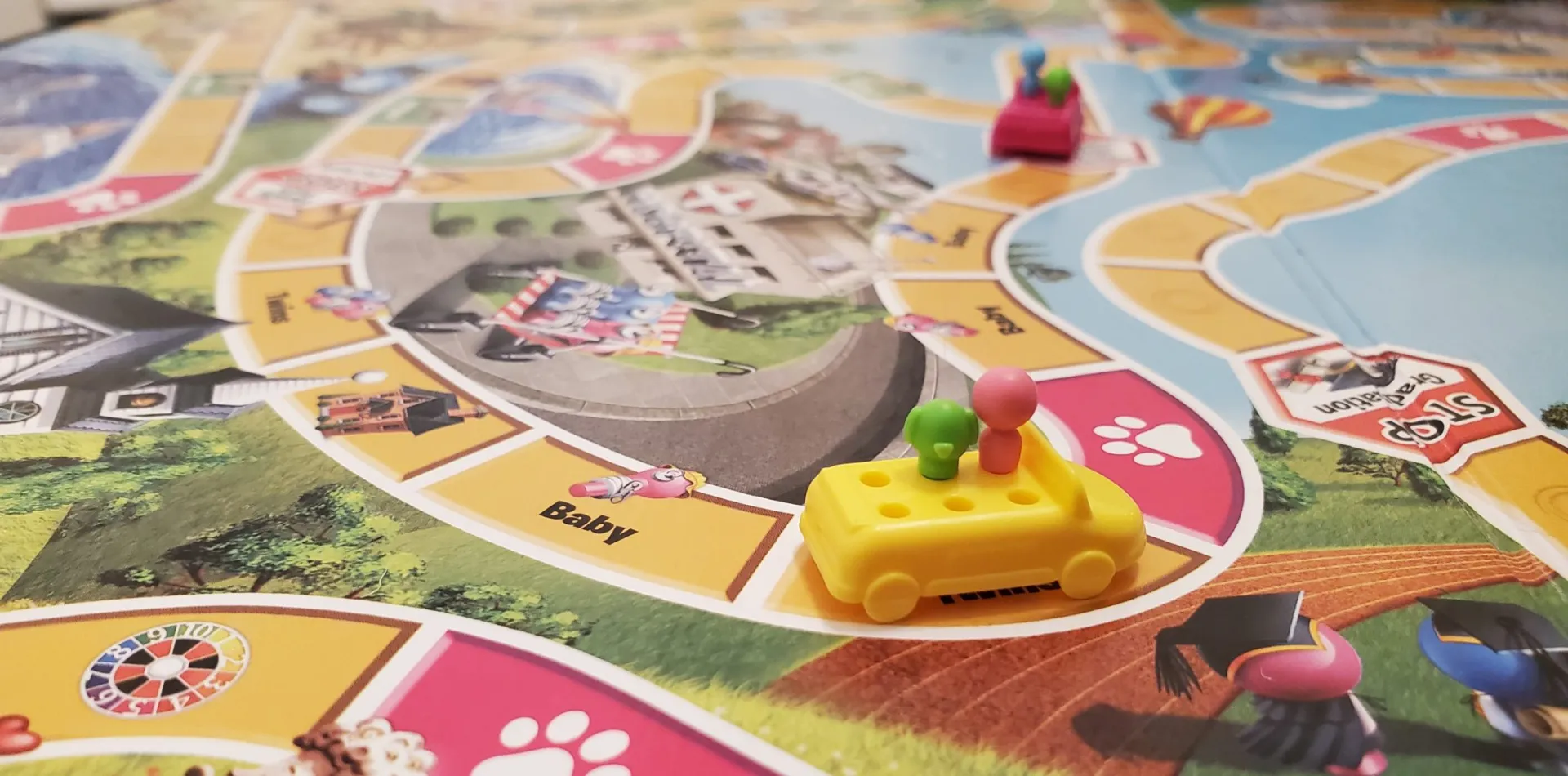
Before smartphones and Google, proving your point in a friendly debate meant flipping through an encyclopedia. Enter Trivial Pursuit—a groundbreaking game that changed everything. Trivial Pursuit history began during this pre-digital era, turning living rooms into lively arenas of knowledge and sparking a global trivia craze.
In the 1980s, something extraordinary happened – Trivial Pursuit & The 80s Trivia Craze took over. It wasn’t just another board game; it became a cultural phenomenon that fascinated millions, transforming casual get-togethers into fierce competitions of cleverness and wisdom.
At its heart, Trivial Pursuit tested players with questions from six different categories:
- Geography
- Entertainment
- History
- Arts & Literature
- Science & Nature
- Sports & Leisure
A key chapter in Trivial Pursuit history is its universal appeal. Whether you were a sports fan, history buff, or pop culture enthusiast, Trivial Pursuit had a category for you. Its signature wheel-shaped board and colorful wedges quickly became iconic symbols of intellectual competition and fun.
By 1984, Trivial Pursuit had achieved staggering success, with 20 million games sold in the United States alone. This remarkable achievement wasn’t just about sales numbers – it represented a fundamental shift in how people viewed board games. This transformation can be traced back to earlier trends in Victorian and early 20th-century board games, which laid the groundwork for modern gaming trends. These pastimes turned trivia from a casual pastime into a competitive social activity that defined an era.
The Birth of Trivial Pursuit
A missing Scrabble piece sparked the creation of one of history’s most successful board games. On December 15, 1979, Canadian friends Chris Haney and Scott Abbott found themselves unable to complete their planned Scrabble game. Their frustration turned into inspiration as they began brainstorming ideas for their own board game.
The duo’s professional backgrounds proved instrumental in shaping Trivial Pursuit. Haney worked as a photo editor for the Montreal Gazette, while Abbott served as a sports journalist for the Canadian Press. Their media experience gave them access to vast amounts of information and a keen sense of what might intrigue potential players.
Creative Financing
The initial development phase required creative financing:
- Five investors contributed $1,000 each
- Artist Michael Wurstlin traded his artistic skills for shares
- The founders mortgaged their homes
- Early prototypes were assembled in Haney’s kitchen
Prototype Development
The game’s first prototype featured handwritten questions on index cards, housed in a crude wooden board. This prototype was a far cry from the final product, which evolved significantly through various design phases. The creators spent countless nights researching and writing thousands of trivia questions, drawing from their journalistic experience to craft engaging content across diverse categories.
Overcoming Skepticism
Despite skepticism from established game manufacturers, Haney and Abbott persisted. They refined their concept, establishing the iconic six categories and the distinctive wheel-shaped board that would become synonymous with trivia gaming. Interestingly, this aspect of design bears resemblance to the evolution of tile placement and modular game design, which has been a key feature in many successful board games since then.

The Launch and Success of Trivial Pursuit in the 80s
Trivial Pursuit hit Canadian shelves in 1981 with a modest 1,100-copy release. The game’s unique mechanics captivated players through its signature six-category challenge system:
- Entertainment (pink)
- Sports & Leisure (orange)
- History (yellow)
- Geography (blue)
- Arts & Literature (brown)
- Science & Nature (green)
Players roll dice to move around the wheel-shaped board, answering questions to collect colored wedges. The goal? Fill your playing piece with all six category wedges and answer a final question correctly in the center hub.
The game’s success skyrocketed beyond expectations. By 1984, Trivial Pursuit dominated the popular board games of the 80s, selling an astounding 20 million copies in the U.S. market alone. The retail sales reached $800 million, marking it as one of the fastest-growing phenomena in gaming history.
This meteoric rise sparked a cultural shift, establishing trivia as mainstream entertainment. Bars and restaurants across North America began hosting trivia nights, while families and friends gathered for regular game sessions. The Genus Edition, the original version, became a must-have item in American households, competing with established classics like Monopoly and Scrabble for table space.
The game’s success reflected the broader rise of trivia games during the decade, as Americans embraced intellectual entertainment that combined social interaction with knowledge testing.
Licensing and Expansion
The incredible success of Trivial Pursuit caught the attention of major game publishers. In 1983, Selchow and Righter secured the licensing rights, turning the Canadian sensation into a global phenomenon. Under their leadership, the game’s retail sales skyrocketed to $800 million by 1984, with 20 million copies flying off U.S. shelves.
Parker Brothers recognized the game’s potential and acquired the rights in 1988, introducing fresh marketing strategies and expanding distribution channels. The acquisition trail continued when gaming giant Hasbro stepped in with an $80 million deal in 2008, bringing new resources and creative direction to the brand.
The game’s reach expanded across borders and cultures with:
- Translations into 17 languages
- Distribution in 26 countries
- 50+ special editions including:
- Lord of the Rings
- Star Wars
- Disney
- Country Music
- Sports
- Baby Boomer
These themed versions kept the classic gameplay while targeting specific interests and demographics, proving Trivial Pursuit’s adaptability across different markets and audiences.
Legal Disputes and Recognition
Trivial Pursuit’s rapid rise attracted legal challenges from multiple parties claiming intellectual property rights. The most notable case emerged in 1984 when Fred Worth, a trivia book author, sued the game’s creators for $300 million. Worth alleged they copied questions from his books, pointing to a deliberate error he planted about the first name of cartoon character Columbo’s wife – both his book and Trivial Pursuit listed it as “Rose” when the show never revealed her name.
The courts ruled in favor of Trivial Pursuit, establishing that:
- Facts are not protected by copyright
- The specific presentation and arrangement of trivia questions can be protected
- The game’s format represented an original creative expression
These landmark rulings helped shape intellectual property law in the gaming industry. The game’s innovative impact earned recognition from the Games Magazine Hall of Fame in December 1993, cementing its status as a revolutionary force in tabletop gaming. This induction acknowledged not just the game’s commercial success, but its role in transforming trivia from a niche hobby into mainstream entertainment.
To understand the broader context of this transformation, it’s worthwhile to explore the fascinating journey of classic board games, including Trivial Pursuit itself. Furthermore, the period during which Trivial Pursuit gained popularity coincided with the golden age of board games, a time marked by mass-market classics and significant innovations in gaming trends.

Evolution Beyond Board Games
Trivial Pursuit’s success sparked a digital revolution in the gaming world. The game’s adaptations reached far beyond the traditional board game format, captivating audiences across multiple platforms. However, it’s important to remember that the evolution of such games is not a recent phenomenon. The history and evolution of dice, for instance, has significantly influenced gameplay and strategy in many board games, including Trivial Pursuit.
The Digital Expansion
The first digital version launched in 1986 on the Commodore 64, followed by releases on popular gaming consoles:
- Nintendo Entertainment System (1989)
- PlayStation (1996)
- Xbox Live Arcade (2009)
- Mobile Apps (2012-present)
Arcade machines brought Trivial Pursuit to entertainment venues, featuring touch-screen interfaces and multiplayer capabilities. These coin-operated versions introduced time-based challenges and competitive scoring systems.
From Board Game to Television
The game’s format inspired numerous TV adaptations worldwide:
- BBC’s Trivial Pursuit (1990)
- The Trivial Pursuit Show in Spain (1994)
- Trivial Pursuit: America Plays (2008)
These shows incorporated elements from the original board game while adding dramatic lighting, suspenseful music, and charismatic hosts. The TV versions created new gameplay mechanics, including “phone-a-friend” options and audience participation segments that would later influence other quiz shows.
A Place Among Cultural Classics
While Trivial Pursuit remains a beloved classic, it’s also part of a larger tapestry of traditional board games from diverse cultures. Each game carries its unique significance and reflects the rich traditions behind them. Moreover, the impact of forgotten predecessors like these cannot be overstated as they have shaped modern classics, influencing mechanics and player experiences.
In addition to this, the evolution of action selection strategies in worker placement games has also played a crucial role in redefining board game mechanics. Lastly, we must acknowledge how strategy board games have evolved over time, shaping gaming history with their unique blend of conflict and strategy.
Cultural Impact and Legacy of Trivial Pursuit in the 80s Trivia Craze
As Trivial Pursuit history unfolded throughout the 1980s, the game revolutionized social gatherings by transforming casual game nights into high-stakes trivia showdowns. Its explosive popularity turned it into a cultural phenomenon that went far beyond the tabletop.
- Social Status Symbol: Hosting Trivial Pursuit parties became a mark of sophistication, with players showcasing their knowledge across diverse subjects
- Educational Impact: Schools incorporated trivia-based learning methods, inspired by the game’s success in making knowledge acquisition entertaining
- Pop Culture Integration: The game’s questions often reflected and preserved 80s pop culture, creating a time capsule of the era’s trends and events
The cultural impact of Trivial Pursuit rippled through society, inspiring:
- A surge in pub quiz nights
- The rise of knowledge-based TV game shows
- An increased interest in general knowledge and lifelong learning
With over 100 million copies sold worldwide, Trivial Pursuit’s legacy lives on through:
- Modern Adaptations: Digital versions keeping the spirit alive for new generations
- Educational Evolution: Inspiring countless educational games and apps
- Gaming Industry Impact: Setting the standard for knowledge-based entertainment
The 80s trivia craze, led by Trivial Pursuit, proved that learning could be both social and entertaining. This revolutionary approach to gaming continues to influence how we share and celebrate knowledge today. Moreover, it paved the way for the evolution of strategy and Eurogames which have become a global phenomenon. Additionally, the impact of famous board game designers can be seen in the lasting influence they have had on the gaming industry as explored in our piece about famous board game creators. Despite some games becoming lost or obscure, their cultural significance remains evident.




